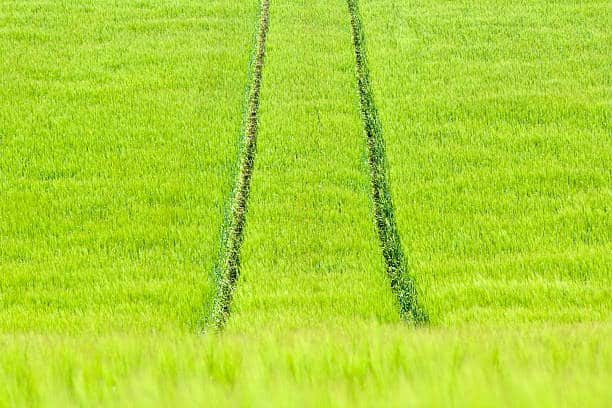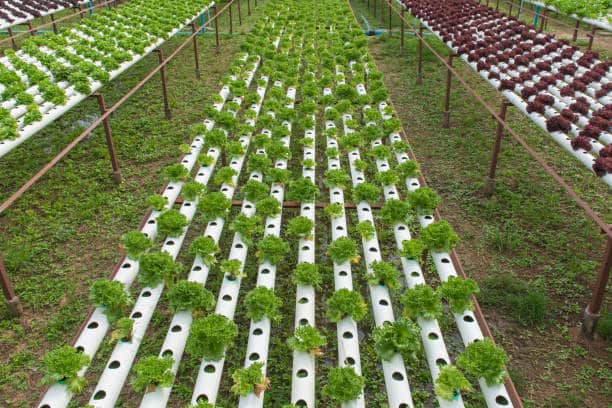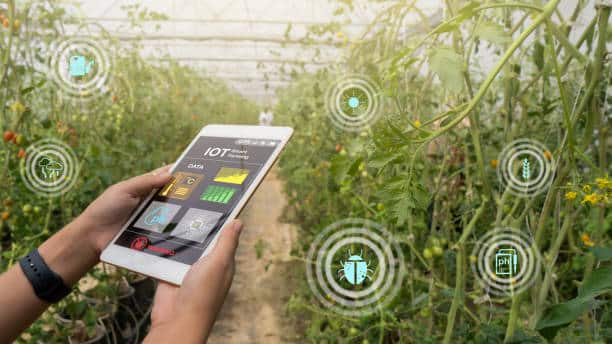Introduction
Revolutionizing Farming Farming has been the foundation of human progress for centuries, developing from basic hand instruments and animal work to complex apparatus and hereditarily designed crops. Lately, the speed of mechanical progression in horticulture has sped up emphatically, introducing another period of cultivating that vows to improve efficiency, manageability, and strength despite worldwide difficulties. This article investigates the most recent advancements changing cultivating, traversing from accuracy farming to biotechnological leap forwards.
1. Accuracy Horticulture: Streamlining Harvest The board

Accuracy horticulture addresses a change in perspective in cultivating, utilizing innovation to improve crop the board rehearses. By utilizing GPS, satellite symbolism, and IoT gadgets, ranchers can screen and deal with their fields with extraordinary exactness. These advancements empower site-explicit administration works on, permitting ranchers to apply sources of info like water, composts, and pesticides unequivocally where they are required.
For instance, GPS-directed farm haulers guarantee that seeds are established in amazing lines, limiting waste and expanding yield. Drones furnished with multispectral cameras can catch point by point pictures of fields, distinguishing regions that require consideration. Soil sensors give constant information on dampness levels, assisting ranchers with settling on informed water system choices. This approach supports efficiency as well as diminishes natural effect by limiting the abuse of synthetic substances and water.
2. Computerization and Advanced mechanics: Reclassifying Work
Work deficiencies and increasing expenses have driven the improvement of computerization and mechanical technology in agribusiness. Independent farm haulers, reapers, and grower are progressively normal, fit for performing assignments with negligible human intercession. These machines utilize progressed calculations and AI to explore fields, perceive crops, and perform tasks with accuracy.
One striking model is the advancement of mechanical weeders, which use PC vision to recognize harvests and weeds. These robots can eliminate weeds without hurting the yields, lessening the requirement for herbicides. Reaping robots are likewise making progress, especially in products of the soil cultivating, where fragile dealing with is essential. Via robotizing work concentrated assignments, these advances increment proficiency and permit ranchers to zero in on more elevated level administration exercises.
3. Web of Things (IoT): Associating the Ranch
The Web of Things (IoT) is changing horticulture by interfacing different gadgets and frameworks on the ranch. IoT gadgets, like sensors and savvy collars for animals, gather and communicate information that can be dissected to improve ranch activities. This network empowers ongoing observing and direction, further developing effectiveness and efficiency.
For example, IoT-empowered water system frameworks can change water conveyance in view of constant soil dampness information, guaranteeing ideal hydration and saving water. Domesticated animals observing frameworks track animal wellbeing and conduct, making ranchers aware of likely issues before they become difficult issues. By incorporating IoT gadgets with ranch the board programming, ranchers can acquire a far reaching perspective on their tasks and pursue information driven choices.
4. Biotechnology and Hereditary Designing: Improving Harvest Strength
Biotechnology and hereditary designing are at the cutting edge of agrarian advancement, offering answers for the absolute most squeezing difficulties in cultivating. Through hereditary alteration, researchers can foster yields that are impervious to vermin, infections, and ecological anxieties like dry season and saltiness. These progressions lessen the requirement for substance sources of info and increment the strength of harvests to changing environment conditions.
One momentous model is the advancement of CRISPR innovation, which takes into account exact altering of plant genomes. This innovation has been utilized to make crops with further developed dietary substance, longer time span of usability, and improved protection from illnesses. Also, progresses in engineered science are empowering the making of totally new plant assortments with beneficial characteristics, preparing for additional manageable and useful horticultural frameworks.
5. Vertical Cultivating: Developing Upwards

Vertical cultivating is a creative way to deal with farming that includes developing harvests in stacked layers, frequently in controlled indoor conditions. This strategy boosts space usage and takes into account all year creation, free of atmospheric conditions. Vertical homesteads use aqua-farming or aeroponics frameworks to convey supplements to plants, lessening the requirement for soil and essentially rationing water.
Metropolitan regions are especially appropriate for vertical cultivating, as it can diminish the distance food makes a trip from ranch to table, diminishing transportation expenses and discharges. Also, the controlled climate of vertical homesteads limits the gamble of bugs and illnesses, decreasing the dependence on pesticides. As metropolitan populaces keep on developing, vertical cultivating offers a suitable answer for fulfill the rising need for new produce.
6. Computerized reasoning (man-made intelligence) and AI: Prescient Cultivating
Man-made consciousness (simulated intelligence) and AI are altering horticulture by empowering prescient cultivating rehearses. These advances break down huge measures of information to distinguish examples and make expectations about crop execution, bug episodes, and weather patterns. By utilizing simulated intelligence, ranchers can expect difficulties and go to proactive lengths to alleviate chances.
For instance, simulated intelligence controlled models can anticipate the ideal planting and reaping times in light of verifiable climate information and current environment conditions. AI calculations can likewise distinguish early indications of irritation invasions or infections, taking into consideration convenient mediations. Moreover, computer based intelligence driven choice emotionally supportive networks can suggest the best administration rehearses for explicit harvests, advancing sources of info and further developing yields.
7. Blockchain Innovation: Guaranteeing Straightforwardness and Recognizability
Blockchain innovation is getting some decent momentum in agribusiness for its capacity to give straightforwardness and recognizability all through the store network. By making a decentralized and permanent record of exchanges, blockchain guarantees that each step of the rural cycle, from homestead to fork, is recorded and irrefutable. This straightforwardness constructs trust among purchasers and partners, guaranteeing the uprightness of food items.
For example, blockchain can be utilized to follow the beginning of horticultural items, confirming that they meet natural or fair-exchange principles. It can likewise smooth out the accreditation cycle, diminishing extortion and guaranteeing that ranchers get fair pay for their produce. Also, blockchain innovation can further develop inventory network productivity by decreasing desk work and empowering quicker exchanges, at last helping the two makers and buyers.
8. Environment Brilliant Horticulture: Adjusting to Environmental Change
Environmental change presents critical difficulties to horticulture, with climbing temperatures, moving atmospheric conditions, and expanding recurrence of outrageous occasions. Environment savvy farming (CSA) means to address these difficulties by advancing practices that upgrade versatility, lessen ozone harming substance emanations, and further develop efficiency.
CSA incorporates a scope of methodologies, including protection farming, agroforestry, and the utilization of environment versatile harvest assortments. Preservation agribusiness centers around insignificant soil aggravation, keeping up with soil cover, and broadening crop revolutions to further develop soil wellbeing and water maintenance. Agroforestry incorporates trees and bushes into rural scenes, giving different advantages like carbon sequestration, biodiversity upgrade, and improved microclimates. By embracing CSA rehearses, ranchers can more readily adjust to changing circumstances and add to worldwide endeavors to alleviate environmental change.
9. Shrewd Water The executives: Monitoring a Valuable Asset
Water is a basic asset for horticulture, and its proficient use is fundamental for economical cultivating. Brilliant water the board advances are assisting ranchers with upgrading water use, decrease squander, and guarantee the supportability of water assets. These innovations incorporate high level water system frameworks, water-productive harvest assortments, and information driven water the executives rehearses.
For instance, dribble water system frameworks convey water straightforwardly to the root zone of plants, limiting vanishing and spillover. Soil dampness sensors and climate information can be incorporated with water system frameworks to apply water just when and where it is required. Moreover, the improvement of dry spell open minded crop assortments assists ranchers with keeping up with efficiency submerged scant circumstances. By taking on shrewd water the executives rehearses, ranchers can improve water use proficiency and add to the protection of this valuable asset.
10. Environmentally friendly power in Horticulture: Controlling Practical Ranches

The coordination of environmentally friendly power sources into agrarian tasks is changing ranches into feasible and independent substances. Sunlight based chargers, wind turbines, and bioenergy frameworks are progressively being utilized to control ranch hardware, water system frameworks, and handling offices. These sustainable power arrangements diminish dependence on petroleum derivatives, lower ozone harming substance emanations, and furnish ranchers with a solid and practical energy supply.
For example, sunlight based chargers can be introduced on roofs, fields, or even incorporated into nursery designs to create power for ranch activities. Wind turbines can outfit wind energy to control water system siphons or grain factories. Bioenergy frameworks, for example, anaerobic digesters, convert horticultural waste into biogas, which can be utilized for warming or power age. By embracing sustainable power, homesteads can lessen their natural impression and upgrade their monetary strength.
Conclusion
The most recent headways in horticultural innovation are reforming cultivating, offering imaginative answers for improve efficiency, manageability, and versatility. From accuracy farming and computerization to biotechnology and sustainable power, these advances are changing the manner in which we develop and oversee food.
As the worldwide populace proceeds to rise and environmental change strengthens, the reception of these state of the art developments will be essential in guaranteeing a solid and reasonable food supply for people in the future. By embracing the capability of rural innovation, we can make ready for a more proficient, versatile, and reasonable farming framework.

